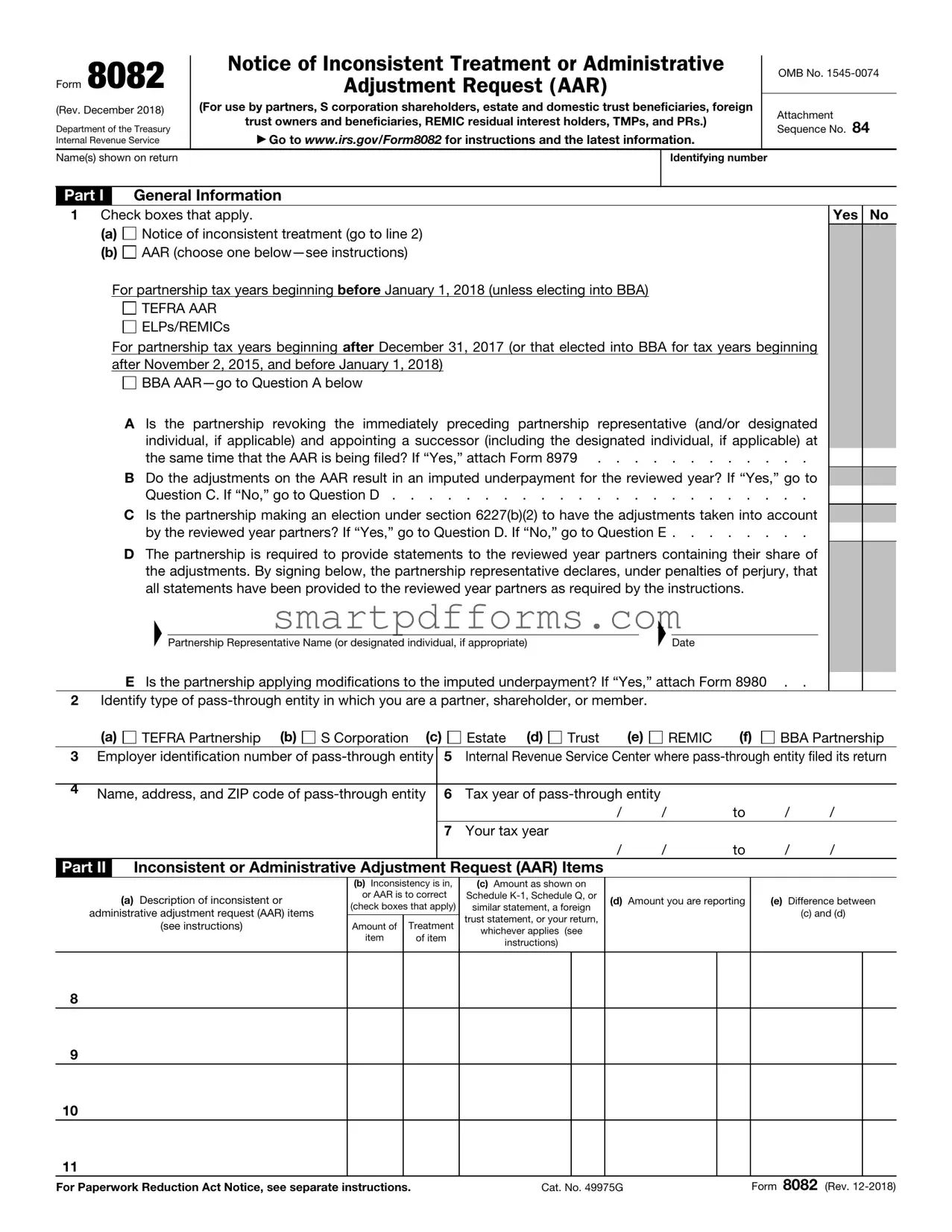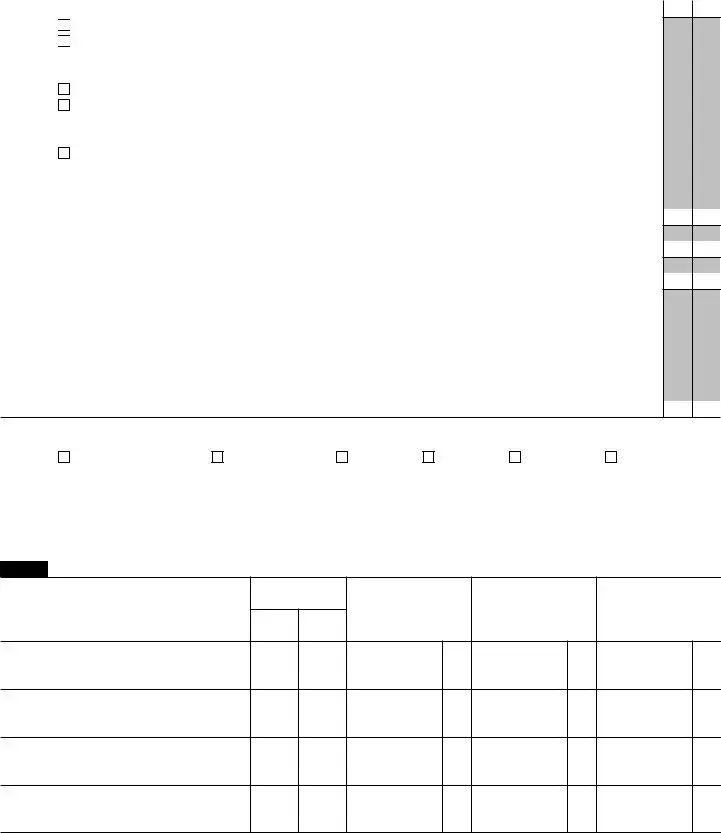|
|
|
|
|
|
Form 8082 |
Notice of Inconsistent Treatment or Administrative |
|
OMB No. 1545-0074 |
Adjustment Request (AAR) |
|
|
|
|
|
|
|
|
(Rev. December 2018) |
(For use by partners, S corporation shareholders, estate and domestic trust beneficiaries, foreign |
|
Attachment |
|
|
trust owners and beneficiaries, REMIC residual interest holders, TMPs, and PRs.) |
|
Department of the Treasury |
|
Sequence No. 84 |
▶ Go to WWW.IRS.GOV/FORM8082 for instructions and the latest information. |
|
Internal Revenue Service |
|
|
Name(s) shown on return |
|
Identifying number |
|
|
|
|
|
Part I |
General Information |
|
1 Check boxes that apply. |
Yes No |
(a)
 Notice of inconsistent treatment (go to line 2)
Notice of inconsistent treatment (go to line 2)
(b)
 AAR (choose one below—see instructions)
AAR (choose one below—see instructions)
For partnership tax years beginning before January 1, 2018 (unless electing into BBA)
TEFRA AAR
ELPs/REMICs
For partnership tax years beginning after December 31, 2017 (or that elected into BBA for tax years beginning after November 2, 2015, and before January 1, 2018)
BBA AAR—go to Question A below
AIs the partnership revoking the immediately preceding partnership representative (and/or designated individual, if applicable) and appointing a successor (including the designated individual, if applicable) at
the same time that the AAR is being filed? If “Yes,” attach Form 8979 . . . . . . . . . . . .
BDo the adjustments on the AAR result in an imputed underpayment for the reviewed year? If “Yes,” go to
Question C. If “No,” go to Question D . . . . . . . . . . . . . . . . . . . . . . .
CIs the partnership making an election under section 6227(b)(2) to have the adjustments taken into account by the reviewed year partners? If “Yes,” go to Question D. If “No,” go to Question E . . . . . . . .
DThe partnership is required to provide statements to the reviewed year partners containing their share of the adjustments. By signing below, the partnership representative declares, under penalties of perjury, that all statements have been provided to the reviewed year partners as required by the instructions.
▲ |
|
▲ |
|
Partnership Representative Name (or designated individual, if appropriate) |
Date |
E Is the partnership applying modifications to the imputed underpayment? If “Yes,” attach Form 8980 . .
2Identify type of pass-through entity in which you are a partner, shareholder, or member.
(a)Description of inconsistent or administrative adjustment request (AAR) items
(see instructions)
(b)Inconsistency is in, or AAR is to correct
(check boxes that apply)
Amount of |
Treatment |
item |
of item |
(c)Amount as shown on Schedule K-1, Schedule Q, or
similar statement, a foreign
trust statement, or your return,
whichever applies (see
instructions)
(d)Amount you are reporting
(e)Difference between
(c)and (d)



 Notice of inconsistent treatment (go to line 2)
Notice of inconsistent treatment (go to line 2)
 AAR (choose one
AAR (choose one 